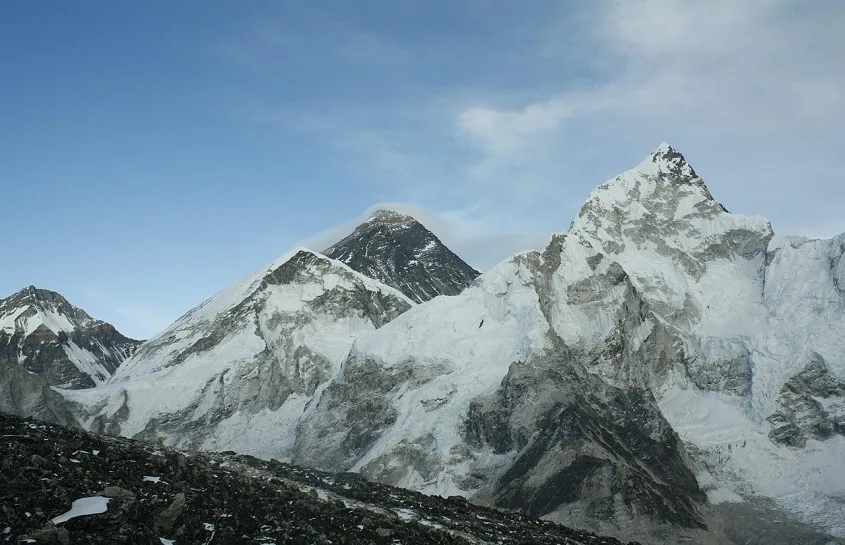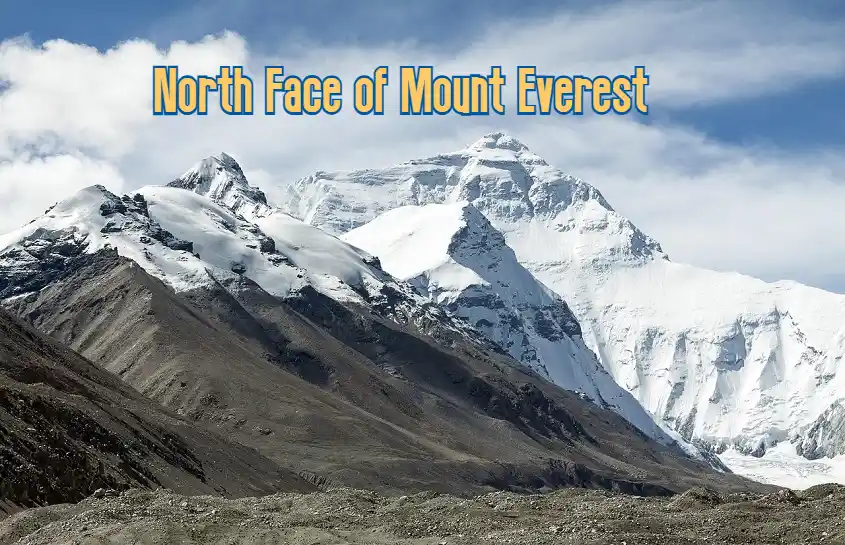When most people picture Mount Everest, they imagine the crowded base camps in Nepal, colorful tents pitched in rows, and climbers making their way up the southern route. But there’s another side to the mountain — wilder, less travelled, and far more intimidating — the north face of Mount Everest.
I saw it first time in person from the Tibetan Plateau and the was sharp and thin, and the wind cut through my jacket like it wasn’t even there. Unlike the southern slope, this side feels almost untouchable — an icy wall rising out of the barren landscape.
What Makes the North Face Special
The north face of Mount Everest is located in Tibet, and it’s a completely different experience from the Nepalese side. Historically, it was the route of the very first British expeditions in the 1920s. Climbers like George Mallory and Andrew Irvine attempted it long before anyone had ever reached the summit.
What makes it so unique?
- Fewer Crowds – You won’t see the same packed base camps as on the south side.
- Harsher Weather – Stronger winds and colder temperatures make this route a serious challenge.
- Steeper Terrain – From the moment you leave Advanced Base Camp (ABC), the climb is brutal.
If you’ve ever wondered what does the north face of Mount Everest look like, picture a jagged ice fortress — massive rock walls, overhanging seracs, and a ridge that seems to stretch into the sky.
The North Face of Mount Everest Pictures – Why They Feel Different
I’ve looked at countless north face of Mount Everest pictures, and they all share the same stark, almost haunting quality. The light in Tibet is harsher, the shadows deeper. You don’t see the lush valleys you find on the south side; instead, it’s all raw earth and ice.
Professional photographers love shooting from this side because the mountain’s pyramid shape is more visible. The sheer contrast between snow and rock makes the images look more dramatic.
If you’re planning a photography trip, here’s a quick tip:
- Morning light is best for highlighting the ridges.
- Late afternoon creates long shadows that bring out the mountain’s texture.
What Does the North Face of Mount Everest Look Like Up Close?

From a distance, the north face looks almost smooth — a massive white wall. But up close, it’s anything but. The route is divided into three steep rock steps that challenge even the most experienced climbers.
Standing at ABC at 6,400 meters, the wall looms above you like something alive. The wind roars constantly, and snow swirls off the summit in ghostly streams. Every few minutes, you hear the crack of shifting ice somewhere above.
The climb itself involves:
- Crossing the East Rongbuk Glacier.
- Climbing steep rock steps covered in ice.
- Traversing narrow ridges with drops on both sides.
It’s no wonder fewer climbers attempt this route compared to the south.
The Extreme Side – North Face of Mount Everest Snowboard
Now, here’s where things get even more extreme: the north face of Mount Everest snowboard descents. This is not something for weekend riders at the local ski hill.
Over the years, a handful of elite mountaineers and snowboarders have dared to ride down sections of the north face. The risks are massive — one wrong move and you’re dealing with cliffs, avalanches, or crevasse falls.
In 2001, French snowboarder Marco Siffredi famously rode from near the summit down the north face. His descent became legendary in snowboarding history, proving that it was possible — but only for those with unmatched skill and a willingness to face serious danger.
Snowboarding the north face means:
- Navigating slopes as steep as 50 degrees.
- Dealing with unpredictable snow conditions.
- Riding at altitudes where oxygen is scarce.
For most of us, it’s the kind of feat we admire from a safe distance while sipping something warm by the fire.
Life at the North Face Base Camps
The journey to the north face of Mount Everest begins in Tibet, with a long drive from Lhasa or Shigatse to the base camp at 5,150 meters. Unlike Nepal’s bustling camps, this one feels quieter, almost eerie. Yaks wander between tents, and prayer flags whip in the wind.
From here, climbers move to the Intermediate Camp and then Advanced Base Camp. Each stage is tougher, with colder nights and thinner air. By the time you reach ABC, even small tasks like boiling water feel exhausting.
Challenges of the North Face Route
Climbing from the north side is considered more technically demanding than the southern route. The biggest challenges include:
- Wind Exposure – Gusts strong enough to knock you off your feet.
- Rock Steps – The Second Step in particular is notorious for its difficulty.
- Longer Summit Push – The final climb from the high camp is longer and more tiring than from the south.
This is why even experienced mountaineers treat the north face with deep respect.
Why the North Face Still Inspires
Even if you never set foot on the slopes, the north face of Mount Everest has a magnetic pull. It’s a place where human ambition meets the raw power of nature. Every photo, every account from climbers, and every rare snowboard descent adds to its legend.
When I look at north face of Mount Everest pictures, I don’t just see a mountain — I see history, adventure, and the kind of challenge that has been calling explorers for more than a century.
Final Thoughts
The North Face isn’t for everyone. It’s colder, lonelier, and far more dangerous than the south. But that’s exactly why it fascinates so many of us. Whether you’re studying what does the north face of Mount Everest look like, planning a photo expedition, or just daydreaming about extreme snowboarding on the north face of Mount Everest snowboard routes, this side of the mountain offers something raw and unforgettable.
It’s the Everest fewer people see — and perhaps that’s what makes it the most captivating of all.
